|
Books Should Be Free Loyal Books Free Public Domain Audiobooks & eBook Downloads |
|
|
Books Should Be Free Loyal Books Free Public Domain Audiobooks & eBook Downloads |
|
Fiction |
|---|
|
Book type:
Sort by:
View by:
|
By: Horatio Alger, Jr. (1832-1899) | |
|---|---|
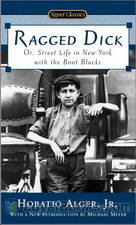 Ragged Dick
Ragged Dick
A fourteen year old homeless boy, Dick, tries to make an honest living in the streets of 1860s New York as a bootblack. He is determined to stay honorable, though he is tempted many times to easy pickings and a life of crime. When a regular customer is impressed by Dick's integrity and invites him to his mansion, this marks a turning point in the life of the young street-smart teenager. Ragged Dick by Horatio Alger Jr was first published in 1868. It represents a typical coming of age story in which a child attains the maturity of adulthood through circumstances in which important choices are made... | |
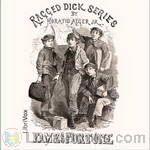 Fame and Fortune
Fame and Fortune
Richard Hunter, in this sequel to Ragged Dick, continues his way in the world through hard work and excellent morals. He, along with his friend Henry, continue their positive outlook as they try to advance their lives. But Dick soon finds envy and jealousy leads others to work against him. How will Dick react as he tries to strive forward while others conspire to hold him down? (Written by Barry Eads) | |
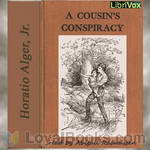 A Cousin's Conspiracy
A Cousin's Conspiracy
Ernest Ray is a young boy who sets out to reclaim the inheritance that was unjustly with held from his father and given to a cousin. (Introduction by Abigail Rasmussen) | |
 Timothy Crump's Ward
Timothy Crump's Ward
A poor family is surprised with an infant on their doorstep on New Year’s Eve with a note and monetary support requesting them to raise the child. Eight years later, the child is stolen and the family is put into more trouble trying to find her. This is a story of how love and good morals are reward with a fairy tale “happily ever after” ending. | |
 Rough and Ready OR Life Among the New York Newsboys
Rough and Ready OR Life Among the New York Newsboys
Join Rough and Ready for his adventure on the streets of New York City. Working as a newsboy, Rough and Ready tries to support himself and his sister on his meager earnings. Unfortunately, their stepfather is seeking to kidnap little Rose, getting an education is hard work, swindlers are trying to trick him out of his money, and thieves are planning nefarious deeds. Luckily for Rough and Ready, he makes some good friends along the way. Summary by Tori Faulder | |
By: Howard Overing Sturgis (1855-1920) | |
|---|---|
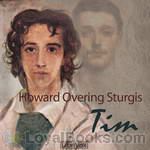 Tim
Tim
The first of only three novels by English author Howard Overing Sturgis, the son of wealthy American expatriates and a close friend of Henry James, Tim portrays a sensitive young boy’s affection for an older boy. (Introduction by Dorlene Kaplan) | |
By: Howard Pyle (1853-1911) | |
|---|---|
 The Merry Adventures of Robin Hood
The Merry Adventures of Robin Hood
A modern day legend, Robin Hood is an archetypal hero of the common people who goes to great lengths to famously take from the rich and give to the poor. Luckily he is not alone in his mission, as his righteous views are shared by his band of Merry Men, a group of yeomen, and together they pursue an end to injustice and oppression. Set in medieval England, the tale begins with the introduction of a young archer, who is provoked into conflict and committing a crime against the formidable Sherriff of Nottingham and is immediately dubbed an outlaw... | |
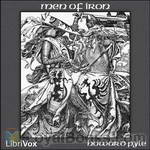 Men of Iron
Men of Iron
Men of Iron by Howard Pyle is historical fiction that transports us back to the 1400’s, a time of knighthood and chivalry. Myles Falworth is eight years old when news comes they must flee their home. His blind father is accused of treason. We see Myles grow up, train as a knight, and with perseverance, clear his father of any wrong-doing and restore their family name. | |
 Otto of the Silver Hand
Otto of the Silver Hand
The story of little Otto, a gentle, peace-loving child born into the heart of turmoil and strife in the castle of a feuding robber baron in medieval Germany. (Summary by Arctura) | |
 Howard Pyle's Book of Pirates
Howard Pyle's Book of Pirates
Swashbuckling tales of legendary pirates, buccaneers, and marooners, terrors of the Spanish Main. | |
 The Garden Behind the Moon: A Real Story of the Moon Angel
The Garden Behind the Moon: A Real Story of the Moon Angel
David goes on a journey to the moon-garden where everything is beautiful and where he also meets Phyllis who is not like the other children in the garden. While he is allowed to play in this beautiful place for awhile, he at last finds out that he has been brought there to reveal his true mission, which is to find the Wonder-Box and the Know-All Book that is hidden in the Iron Castle and bring them back to earth. In order to find the Iron Castle, he must first find and tame the Black Winged Horse. Will he be able to succeed at the task given him? (Summary by Laura Victoria) | |
 Twilight Land
Twilight Land
The room was all full of twilight; but there they sat, every one of them. I did not count them, but there were ever so many: Aladdin, and Ali Baba, and Fortunatis, and Jack-the-Giant-Killer, and Doctor Faustus, and Bidpai, and Cinderella, and Patient Grizzle, and the Soldier who cheated the Devil, and St. George, and Hans in Luck, who traded and traded his lump of gold until he had only an empty churn to show for it; and there was Sindbad the Sailor, and the Tailor who killed seven flies at a blow,... | |
 Wonder Clock
Wonder Clock
"Four and twenty marvellous tales, one for each hour of the day," retold in a novel and entertaining manner by a master of the form. While drawing on German, English, and Scandinavian folk literature for many of his characters and plots, Pyle reworks the material in an imaginative way, crafting the tales in his own inimitable style. Equally engaging are the numerous woodcuts that accompany the stories and enliven the narrative. Read along and see the illustrations | |
 Rejected Of Men; A Story Of Today
Rejected Of Men; A Story Of Today
This is a setting of the story of Jesus as if it had occurred during early twentieth century America. The narrator's point of view is that of an outsider looking in at the story of Jesus. Howard Pyle (1853 - 1911) was an American illustrator and author. | |
By: Howard R. Garis (1873-1962) | |
|---|---|
 Sammie and Susie Littletail
Sammie and Susie Littletail
Once upon a time there lived in a small house built underneath the ground two curious little folk, with their father, their mother, their uncle and Jane Fuzzy-Wuzzy. Jane Fuzzy-Wuzzy was the nurse, hired girl and cook, all in one, and the reason she had such a funny name was because she was a funny cook. She had long hair, a sharp nose, a very long tail and the brightest eyes you ever saw. She could stay under water a long time, and was a fine swimmer. In fact, Jane Fuzzy-Wuzzy was a big muskrat, and the family she worked for was almost as strange as she was. (excerpt from text) | |
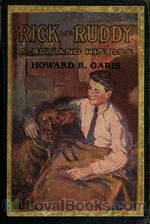 Rick and Ruddy
Rick and Ruddy
This delightful story is full of ups and downs involving a young boy and his dog, "a gift from the sea". The adventures range from playful antics to times of peril, and through it all, our protagonists (both human and canine alike) come through for each other as only a dog and his boy can! This adventurous and fun tale will bring you back to your own childhood memories...you and that special tail-wagger from the "good ol' days". | |
 Uncle Wiggily's Adventures
Uncle Wiggily's Adventures
Due to Uncle Wiggily's rheumatism being so very bad, Dr. Possum prescribes a journey to help him move around, have a change of air, and a good long bout of traveling to get more exercise. So Uncle Wiggily packs his valise and sets forth! | |
 Uncle Wiggily in the Woods
Uncle Wiggily in the Woods
Howard Garis, one of the most prolific children's writers of the 20th century, is credited with writing over 1500 Uncle Wiggily stories. In this collection, the loveable old rabbit stays close to home and visits woodland friends. | |
 Uncle Wiggily and Old Mother Hubbard
Uncle Wiggily and Old Mother Hubbard
Uncle Wiggily Longears, an old bunny gentleman now stricken with rheumatism and getting around with a cane, still is quite active. In these stories, he encounters a string of characters from Mother Goose's tales and has adventures that are not quite in keeping with her books!These gentle tales are 7 - 8 minutes each and quite suited to a nightly reading to a small child. (Intro by Mark F. Smith) | |
 Uncle Wiggily's Travels
Uncle Wiggily's Travels
This is the second of 79 Uncle Wiggily books published and contains another selection of bedtime stories from those originally published in the Newark Evening News every day except Saturday for over 40 years. Uncle Wiggily Longears is a loveable rabbit who suffers from rheumatism and has many woodland friends and innocent adventures. | |
 Curly and Floppy Twistytail (The Funny Piggie Boys)
Curly and Floppy Twistytail (The Funny Piggie Boys)
The adventures of two little pig boys and their mom and dad. "Once upon a time, not so very many years ago, in the days when there were fairies and giants and all things like that, there lived in a little house, on the edge of a wood, a family of pigs. Now these pigs weren't like the pigs, which perhaps you children have seen on most farms. No, indeed! They were just the nicest cleanest, sweetest pigs you ever dreamed of—not that pigs on a farm can't be clean, if they want to, but, somehow or other, no one seems to have time to see that they are clean." | |
By: Hugh Lofting (1886-1947) | |
|---|---|
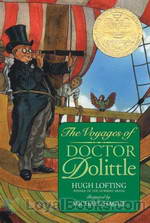 The Voyages of Doctor Dolittle
The Voyages of Doctor Dolittle
The delightfully eccentric Doctor Dolittle, rendered immortal on screen by the gifted Rex Harrison, has remained a firm favorite with generations of children ever since he made his debut in an earlier novel, The Story of Doctor Dolittle. In his second outing titledThe Voyages of Doctor Dolittle, the maverick physician takes on a new assistant, Tommy Stubbins. The story is structured as a first person account given by Tommy, who is now a very old man. The boy who was the son of the village cobbler first meets Doctor Dolittle when he takes a hurt squirrel to the doctor for treatment... | |
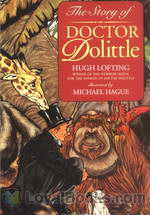 The Story of Doctor Dolittle
The Story of Doctor Dolittle
An adventurous children’s novel, The Story of Doctor Dolittle is the first book in the Doctor Dolittle series. The novel depicts the many adventures of Dr. John Dolittle as he learns the language of animals and takes on various feats including exotic travel, a dangerous encounter with pirates, and a mission to set right from wrong. The novel begins with the introduction of Dr. John Dolittle, an animal lover and respected physician, who lives in the small English town of Puddleby-on-the-Marsh with his unmarried sister... | |
By: Hugh Walpole (1884-1941) | |
|---|---|
 Jeremy
Jeremy
With affectionate humor, Mr. Walpole tells the story of Jeremy and his two sisters, Helen and Mary Cole, who grow up in Polchester, a quiet English Cathedral town. There is the Jampot, who is the nurse ; Hamlet, the stray dog ; Uncle Samuel, who paints pictures and is altogether 'queer’; of course, Mr. and Mrs. Cole, and Aunt Amy. Mr. Walpole has given his narrative a rare double appeal, for it not only recreates for the adult the illusion of his own happiest youth, but it unfolds for the child-reader a genuine and moving experience with real people and pleasant things... | |
 Portrait Of A Man With Red Hair; A Romantic Macabre
Portrait Of A Man With Red Hair; A Romantic Macabre
Is the father insane or merely sadistic, a man entombed in a spirit of malevolence? This 1925 novel by a perceptive observer explores the territory exceptionally.- Summary by david wales | |
By: Ida Coe and Alice Christie (1876-?) | |
|---|---|
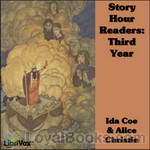 Story Hour Readers: Third Year
Story Hour Readers: Third Year
Short and sweet stories for children from the 19th century. The stories were compiled by two New York City teachers and were thought appropriate for third year children at that time. | |
By: Ignatius Loyola Donnelly (1831-1901) | |
|---|---|
 Atlantis: The Antediluvian World
Atlantis: The Antediluvian World
"Atlantis: The Antediluvian World is a book published during 1882 by Minnesota populist politician Ignatius L. Donnelly, who was born in Philadelphia, Pennsylvania during 1831. Donnelly considered Plato's account of Atlantis as largely factual and attempted to establish that all known ancient civilizations were descended from this supposed lost land. Many of its theories are the source of many modern-day concepts we have about Atlantis, like the civilization and technology beyond its time, the origins of all present races and civilizations, a civil war between good and evil, etc." | |
By: Irvin S. Cobb (1876-1944) | |
|---|---|
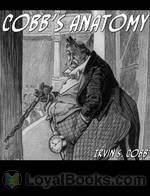 Cobb's Anatomy
Cobb's Anatomy
Irvin Shrewsbury Cobb was born on June 23, 1876. At seventeen years of age, he began writing for the Paducah Daily News, his hometown paper. At nineteen he became the managing editor; up to that point, our nation’s youngest. He worked as a columnist, a humorist and an author. But ‘horror,’ and ’short stories,’ are not why he is remembered. He is remembered because he was, and still is, funny. And although he is now dead–he died March 11, 1944–this work “Cobb’s Anatomy,” among others, has left an indelible mark upon mankind: a smile. | |
 One Third Off
One Third Off
Irvin Shrewsbury Cobb (June 23, 1876–March 11, 1944) was an American author, humorist, and columnist who lived in New York and wrote over 60 books and 300 short stories. Cobb has been described as “having a round shape, bushy eyebrows, full lips, and a triple chin. He always had a cigar in his mouth.” This book is a hilarious account of Cobb’s attempts at weight-loss. | |
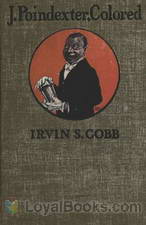 J. Poindexter, Colored
J. Poindexter, Colored
This comic novel relates the first-person adventures in New York City of Jefferson Poindexter, personal assistant to Cobb's famous Judge Priest, while the judge is vacationing abroad. (Introduction by Grant Hurlock) | |
By: Irving Bacheller (1859-1950) | |
|---|---|
 Eben Holden - A Tale of the North Country
Eben Holden - A Tale of the North Country
Eben Holden - A Tale of the North Country. Having lost both parents and his home in northern Vermont, orphan Willie Brower is taken in by Eben Holden, "Uncle Eb" who transports him westward to save him from being sent to an orphanage. Through the Adirondacks and into the St. Lawrence valley they travel. Eben is kind, happy, and loves to tell stories to the youngster, many of which were to shape the life and ideals of Willie during his life.This story follows Willie as a young orphan, later as a journalist, and finally as a soldier who enlists in the army at the outset of the American Civil War... | |
 Silas Strong
Silas Strong
Per the author: "The book has one high ambition. It has tried to tell the sad story of the wilderness itself—to show, from the woodsman's view-point, the play of great forces which have been tearing down his home and turning it into the flesh and bone of cities." But this story is much more than that. It revolves around Silas Strong and his distaste for the modernization and destruction of his beloved forest surroundings, and how it pleases him to teach younger folk how to appreciate that which has been given us... | |
By: Irving Sydney Dix | |
|---|---|
 Comet and Other Verses
Comet and Other Verses
A few years ago, while recovering from an illness, I conceived the idea of writing some reminiscent lines on country life in the Wayne Highlands. And during the interval of a few days I produced some five hundred couplets,—a few good, some bad and many indifferent—and such speed would of necessity invite the indifferent. A portion of these lines were published in 1907. However, I had hoped to revise and republish them, with additions of the same type, at a later date as a souvenir volume of verses for those who spend the summer months among these hills—as well as for the home-fast inhabitants... | |
By: Irwin Leslie Gordon (1888-1954) | |
|---|---|
 Who Was Who: 5000 BC – 1914
Who Was Who: 5000 BC – 1914
A short, humorous biography of famous people from 5000 BC to 1914. — S. McGaughey From the Introduction, “The editor begs leave to inform the public that only persons who can produce proper evidence of their demise will be admitted to Who Was Who. Press Agent notices or complimentary comments are absolutely excluded, and those offering to pay for the insertion of names will be prosecuted. As persons become eligible they will be included without solicitation, while the pages will be expurgated of others should good luck warrant.” | |
By: Isabella Alden (1841-1930) | |
|---|---|
 The King's Daughter
The King's Daughter
Dell Bronson has been reared in Boston by her refined uncle and aunt until, at age 18, she is called home by her father, a coarse tavern owner in Lewiston. As a daughter of the heavenly King, she strives to honor her heavenly Father by wooing her earthly father to Christ and away from rum. Set in the era of the temperance movement of the 1800’s. Authored by Isabella M. Alden under the pen name “Pansy.” Third in the Ester Ried series. | |
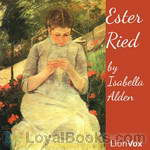 Ester Ried
Ester Ried
Authored by Isabella M. Alden under the pen name “Pansy.” Ester Ried’s life is a dull monotony of toiling at her family’s boardinghouse. She’s overworked, jealous and cranky, a poor example of a Christian to her family and associates. She awakens to a new attitude and commitment due to an extended visit with her cousin. | |
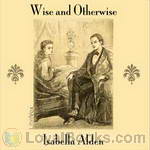 Wise and Otherwise
Wise and Otherwise
Immature Mr. Tresevant (from “The King’s Daughter”) comes to Newton with his spoiled wife to be the new pastor of the church attended by Dr. and Mrs. Douglass, Mr. and Mrs. Sayles, and Mr. and Mrs. Tyndall (from “Ester Ried” and “Julia Ried”), boarding with Jerome and Abbie Sayles. Authored by Isabella M. Alden under the pen name “Pansy.” Fourth in the Ester Ried series. | |
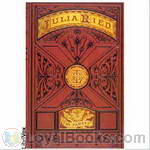 Julia Ried
Julia Ried
Authored by Isabella M. Alden under the pen name “Pansy.” Sequel to “Ester Ried.” Julia Ried must take a job as a bookkeeper in a factory to earn a living. The mistress of her boardinghouse influences her in a negative way, drawing her into a life and attitude displeasing to God. Will her family and friends be able to convince her stand up for what’s right? | |
 Four Girls at Chautauqua
Four Girls at Chautauqua
Authored by Isabella M. Alden under the pen name “Pansy.” First in the Chautauqua Girls series. Four friends – spoiled, quirky Ruth; fun-loving and mischievous Eurie; poor, independent and brainy Marion; and meek, approval-seeking Flossy – attend Chautauqua on a lark, and their lives are changed forever. (Chautauqua is an adult education movement in the United States, highly popular in the late 19th and early 20th centuries. The Chautauqua brought entertainment and culture for the whole community, with speakers, teachers, musicians, entertainers, preachers and specialists of the day.) | |
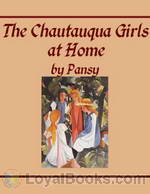 The Chautauqua Girls at Home
The Chautauqua Girls at Home
Sequel to Four Girls at Chautauqua. Ruth, Flossy, Eurie, and Ruth return home as new Christians, eager to begin working. Their new faith clashes with their old lives, which they must overcome, as well as the prejudices of friends and acquaintances. | |
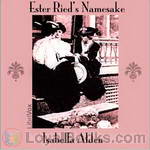 Ester Ried's Namesake
Ester Ried's Namesake
Ester Ried Randall tries to live up to her parents’ expectations and the name she’s been given, but her religion is a chore. Will she learn the lesson of faith that Ester did? Fifth and final book in the Ester Ried series. Authored by Isabella M. Alden under the pen name “Pansy.” | |
 Judge Burnham's Daughters
Judge Burnham's Daughters
Fifth in the Chautauqua Girls series. Ruth Erskine Burnham has helped raise her husband’s two daughters, but all have rejected her faith and values. The constant pressure to compromise has weakened her walk and made her life miserable. Her one comfort is her somewhat sickly 5 year old son. Will she return to the strong faith of her young womanhood, and will her family finally follow? | |
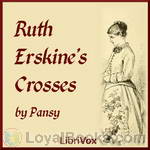 Ruth Erskine's Crosses
Ruth Erskine's Crosses
Third book in the Chautauqua Girls series. Written by Isabella Alden under the pseudonym “Pansy.” Ruth’s father brings home a wife and daughter, after 18 years, that Ruth had never known about. Suddenly she is no longer the queen of her home. And what’s worse, the new mother and sister are rude and antagonistic. How will Ruth bear this cross? | |
By: Isabella L. Bird (1831-1904) | |
|---|---|
 A Lady's Life in the Rocky Mountains
A Lady's Life in the Rocky Mountains
Isabella Bird began travelling while in her early twenties to help alleviate illness that had plagued her since childhood. She was a single woman in her early forties when she made her treck through the Rocky Mountains. A Lady’s Life in the Rocky Mountains details this fascinating account of her travels through a series of letters written to her sister, Henrietta. These letters are filled with beautiful, vivid descriptions of the scenery, the people she encountered, the way of life, and a mountain man named Jim Nugent, that was as rough as they come, but a complete gentleman with Ms... | |
By: Isabella M. Alden | |
|---|---|
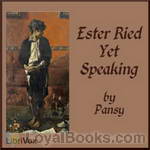 Ester Ried Yet Speaking
Ester Ried Yet Speaking
Authored by Isabella M. Alden under the pen name “Pansy.” Fourth in the Chautauqua Girls series. Alfred Ried (brother of Ester Ried from that series) wants to help the hundreds of poor street boys in his city to come to faith and improve their conditions, but is discouraged and overwhelmed with the task. Enter Flossy (Shipley) Roberts, a willing worker who focuses on 7 such boys and especially on one. | |
By: Isabella Varley Banks (1821-1897) | |
|---|---|
 Manchester Man
Manchester Man
Jabez Clegg, the Manchester man, floats into this historical novel in 1799, carried downstream by the River Irk in flood. Jabez's rise to commercial success mirrors the rise of the city at the heart of the industrial revolution. Mrs George Linnaeus Banks (nee Isabella Varley) weaves a web of historical fact and fiction in a fast-paced story built around the rivalry between the Jabez and his nemesis Laurence Aspinall, and the fate of Augusta Ashton, who is loved by both but loves only one. An entertaining fictional journey through the early 19th century history of the city of Manchester, the book also has serious points to make about women's choices and domestic violence. | |
By: Israel Zangwill (1864-1926) | |
|---|---|
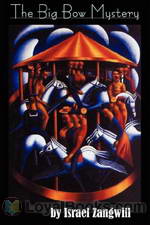 The Big Bow Mystery
The Big Bow Mystery
Regarded as the first full-length locked room mystery, the novel focuses on a murder that has occurred inside a locked room, with no clear indication as to the weapon used, the perpetrator of the horrendous crime, or a possible escape route. Needless to say, The Big Bow Mystery has all the elements necessary to engage its audience and encourage them to look between the lines in an attempt to unravel the complex murder. Set in Bow, east London, the novel opens when Mrs. Drabdump, a widow who rents out rooms, panics when one of her lodgers does not respond to her fervent attempts to wake him... | |
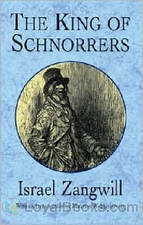 The King of Schnorrers
The King of Schnorrers
Manasseh da Costa is a schnorrer (beggar) who lives on the charitable contributions of the Jews of late 18th-century London. But Manasseh is far from being a humble panhandler for, as every schnorrer knows, supporting the poor is a commandment from God (a mitzvah) not just a favour. And as the descendant of Portuguese Jews who had lived in England for many generations, Manasseh is the social superior of those newly arrived from Eastern Europe (called ‘Tedesco’), even his wealthy patron Joseph Grobstock... | |
 Grotesques and Fantasies
Grotesques and Fantasies
A set of often funny, sometimes tragic stories by Israel Zangwill. Most famous for his scathingly accurate portrayals of the Jewish ghetto, these stories have a wider stage, poking fun at social conventions and society itself, both high and low. The real and the fantastic collide to produce a world uniquely Zangwill's.These are the tales of figures as diverse as a pantomime dragon, an excellent butler, a man living his life in the wrong order and a Jewish maiden who knows exactly what she is worth... | |
By: Ivan Goncharov (1812-1891) | |
|---|---|
 Oblomov
Oblomov
Oblomov is the best known novel by Russian writer Ivan Goncharov, first published in 1859. Oblomov is also the central character of the novel, often seen as the ultimate incarnation of the superfluous man, a symbolic character in 19th-century Russian literature. Oblomov is a young, generous nobleman who seems incapable of making important decisions or undertaking any significant actions. Spoiled as a child to the point of not even being able to put on his own socks, Oblomov is unprepared to deal with the smallest difficulty of adult life... | |
 Common Story
Common Story
Alexander Fedoritch Adouev is the naïve, pampered son of Anna Pavlovna, a provincial landowner. He decides to go off to Saint Petersburg, not only to make his mark upon society but also to fulfill his two rosy romantic dreams of becoming a great writer and finding a great love. He is taken under the reluctant wing of his uncle, Piotr Ivanitch Adouev, a pragmatic, hard-headed businessman who scorns everything romantic and tries to cure Alexander Fedoritch of his sentimental, youthful illusions. The... | |
By: Ivan S. Turgenev | |
|---|---|
 First Love
First Love
The title of the novella is almost an adequate summary in itself. The “boy-meets-girl-then-loses-her” story is universal but not, I think, banal – despite a surprise ending which notoriously turns out to be very little of a surprise. “First Love” is given its originality and poignancy by Turgenev’s mastery of the piercing turning-point (akin to Joyce’s “epiphanies”) that transforms the character’s whole being, making a tragic outcome inevitable. Even the nature symbolism is rescued from triteness by lovely poetic similes – e... | |
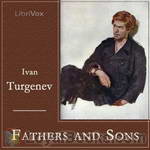 Fathers and Sons
Fathers and Sons
The fathers and children of the novel refers to the growing divide between the two generations of Russians, and the character Yevgeny Bazarov has been referred to as the “first Bolshevik”, for his nihilism and rejection of the old order. Turgenev wrote Fathers and Sons as a response to the growing cultural schism that he saw between liberals of the 1830s/1840s and the growing nihilist movement. Both the nihilists (the “sons”) and the 1830s liberals sought Western-based social change in Russia... | |
 The Diary of a Superfluous Man
The Diary of a Superfluous Man
Turgenev’s shy hero, Tchulkaturin, is a representative example of a Russian archetype – the “superfluous man”, a sort of Hamlet not necessarily dignified with the title Prince: an individual of comfortable means leading a dreary existence, without purpose and led on by events which may, as in this story, engulf him. The novella takes the form of a diary started by Tchulkaturin in the shock of being diagnosed as having a terminal illness. The journal entries cover a period of two weeks, leading to his death... | |
 On the Eve
On the Eve
On the Eve appeared in 1860, two years before Fathers and Sons, Turgenev's most famous novel. It is set in the prior decade (by the end of the novel, the Crimean War (1853-56) has already broken out. It centers on the young Elena Nikolaevna Stakhov, daughter of Nikolai Arteyemvitch and Anna Vassilyevna Stahov. Misunderstood by both her parents (Nikolai Artemyevitch is at least as interested in his German mistress as in members of her family) she is on friendly terms with both the would-be professor Andrei Petrovitch Bersenyev and the rising young sculptor Pavel Yakovitch Shubin, both of whom might be -- or might not be -- in love with her... | |
By: Izaak Walton (1593-1683) | |
|---|---|
 The Compleat Angler
The Compleat Angler
The Compleat Angler is a celebration of the art and spirit of fishing in prose and verse. Walton did not profess to be an expert with the fly, but in the use of the live worm, the grasshopper and the frog "Piscator" could speak as a master. There were originally only two interlocutors in the opening scene, "Piscator" and "Viator"; but in the second edition, as if in answer to an objection that "Piscator" had it too much in his own way in praise of angling, he introduced the falconer, "Auceps," changed "Viator" into "Venator" and made the new companions each dilate on the joys of his favourite sport. | |
By: J. C. Ryle (1816-1900) | |
|---|---|
 Two Bears, and Other Sermons for Children
Two Bears, and Other Sermons for Children
”Let no one make you think that you are too young to serve God. That is not true. As soon as you know right from wrong, you are old enough to begin taking the right way. As soon as you are old enough to be punished for doing wrong, you are old enough to give your heart to God, and to follow Christ.” So Rev. Ryle speaks to children of all ages. He does not speak down to children, for even the littlest ones can understand great spiritual truths. Instead, he teaches them in simple language what it means to be a true follower of Jesus and challenges them to live a better life whatever their age by following Jesus’ example – messages we adults could profit from as well... | |
By: J. M. Barrie (1860-1937) | |
|---|---|
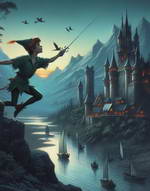 Peter Pan
Peter Pan
His name has become a metaphor for one who will never grow old. Peter Pan by JM Barrie is the story of a boy who remains a boy while the world around him changes. Sir James Mathew Barrie was a Scottish playwright and novelist whose works were received with great critical and commercial success in the late nineteenth and early twentieth century. He discovered the main inspiration for his creative genius in his friendship (and later guardianship) with the children of Arthur and Sylvia Llewellyn-Davies... | |
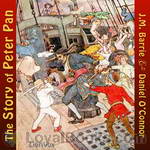 The Story of Peter Pan
The Story of Peter Pan
THE STORY OF PETER PAN RETOLD FROM THE FAIRY PLAY BY SIR J.M. BARRIE BY DANIEL O'CONNOR. Basically, Daniel O'Connor took the story from the original play, with the approval of Barrie, and shortened it into a book with music and beautiful illustrations. This shorter book was published before Barrie wrote the longer novel using the same plot and characters. | |
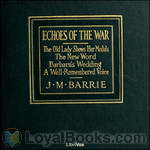 Echoes of the War
Echoes of the War
Short stories with dramatic parts about civilian life in London during the First World War. Some humorous moments. By the author of "Peter Pan". | |
 Peter and Wendy
Peter and Wendy
Peter and Wendy tells the classic story of Peter Pan, a mischievous little boy who can fly, and his adventures on the island of Neverland with Wendy and her brothers, the fairy Tinker Bell, the Lost Boys, the Indian princess Tiger Lily, and the pirate Captain Hook. (Introduction modified from Wikipedia) | |
 Little White Bird
Little White Bird
"A children's book, sharp social commentary and sad psychological thriller about a man's search for a sense of belonging. All in one amazing and lyrical collection. This is the first book in which Peter Pan starts to appear. His adventure in Kensington Gardens are first narrated here. Other than that, it offers a magical portrait of contemporary London, and a realistic tale of a family to which every one of us could have belonged." | |
 Tommy and Grizel
Tommy and Grizel
This book continues Sentimental Tommy, also in the catalogue. Tommy grows up and marries Grizel. But life is not only roses and rainbows. This book has all the elements of a good love story, but it is also a book about growing up and finding out your distinct voice in the world. - Summary by Stav Nisser. | |
By: J. Thorne Smith, Jr. (1892-1934) | |
|---|---|
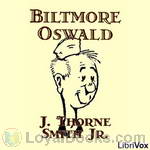 Biltmore Oswald
Biltmore Oswald
The hilarious diary of a young man's recruitment into, and service in a navy, which, though well equipped and disciplined, remains woefully ill prepared for his arrival and dubious contribution. (Introduction by Nigel Boydell) | |
By: J. Walker McSpadden (1874-1960) | |
|---|---|
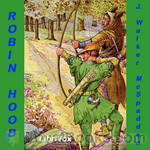 Robin Hood
Robin Hood
Robin Hood is a heroic outlaw in English folklore. A highly skilled archer and swordsman, he is known for "robbing from the rich and giving to the poor", assisted by a group of fellow outlaws known as his "Merry Men". Traditionally Robin Hood and his men are depicted wearing Lincoln green clothes. The origin of the legend is claimed by some to have stemmed from actual outlaws, or from ballads or tales of outlaws. | |
By: Jack Boyle (1881-1928) | |
|---|---|
 Boston Blackie
Boston Blackie
Boston Blackie is the novelization of a group of pulp short stories by Jack Boyle (1881-1928). Blackie, an ex-con with a college education, is a jewel thief based in San Francisco, who outwits the cops with the help of his wife Mary. The character was altered for a later series of popular films and radio shows to become a “reformed” jewel thief turned private eye. | |
By: Jack London (1876-1916) | |
|---|---|
 The Sea Wolf
The Sea Wolf
A maritime classic acclaimed for its exciting adventure, The Sea Wolf offers a thrilling tale of life at sea, while exploring the many difficulties that may erupt on board a ship captained by a brutally hedonistic and controlling individual. Additionally, the psychological adventure novel covers several themes including mutiny, existentialism, individualism, brutality, and the intrinsic will to survive. The novel sets into motion when its protagonist, the soft and cultivated scholar Humphrey van Weyden, is witness to a precarious collision between his ferry and another ship... | |
 The Faith of Men
The Faith of Men
A collection of short stories by author Jack London | |
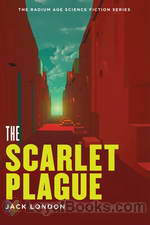 The Scarlet Plague
The Scarlet Plague
Known mainly for his tales of adventure, this work of science fiction by Jack London is set in a post-apocalyptic future. It’s 2072, sixty years after the scarlet plague has depopulated the planet. James Howard Smith is one of the few survivors of the pre-plague era left alive in the San Francisco area, and as he realizes his time grows short, he tries to impart the value of knowledge and wisdom to his grandsons. Through his narrative, we learn how the plague spread throughout the world and of the struggles of the handful of survivors it left in its wake. The Scarlet Plague was originally published in London Magazine in 1912. | |
 The Iron Heel
The Iron Heel
A dystopian novel about the terrible oppressions of an American oligarchy at the beginning of the Twentieth Century, and the struggles of a socialist revolutionary movement. (Introduction by Matt Soar) | |
 The Cruise of the Snark
The Cruise of the Snark
The Cruise of the Snark (1913) is a memoir of Jack and Charmian London’s 1907-1909 voyage across the Pacific. His descriptions of “surf-riding”, which he dubbed a “royal sport”, helped introduce it to and popularize it with the mainland. London writes: Through the white crest of a breaker suddenly appears a dark figure, erect, a man-fish or a sea-god, on the very forward face of the crest where the top falls over and down, driving in toward shore, buried to his loins in smoking spray, caught up by the sea and flung landward, bodily, a quarter of a mile... | |
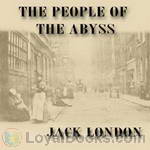 The People of the Abyss
The People of the Abyss
Jack London lived for a time within the grim and grimy world of the East End of London, where half a million people scraped together hardly enough on which to survive. Even if they were able to work, they were paid only enough to allow them a pitiful existence. He grew to know and empathise with these forgotten (or ignored) people as he spoke with them and tasted the workhouse, life on the streets, … and the food, which was cheap, barely nutritious, and foul.He writes about his experiences in... | |
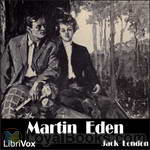 Martin Eden
Martin Eden
Martin Eden (1909) is a novel by American author Jack London, about a struggling young writer. It was first serialized in the Pacific Monthly magazine from September 1908 to September 1909, and subsequently published in book form by The Macmillan Company in September 1909.This book is a favorite among writers, who relate to Martin Eden's speculation that when he mailed off a manuscript, 'there was no human editor at the other end, but a mere cunning arrangement of cogs that changed the manuscript from one envelope to another and stuck on the stamps,' returning it automatically with a rejection slip... | |
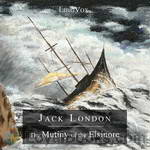 The Mutiny of the Elsinore
The Mutiny of the Elsinore
This is the story of a voyage of a sailing ship from Baltimore to Seattle, east-to-west around Cape Horn in the winter. It is set in 1913 and the glory days of “wooden ships and iron men” are long over. The Elsinore is a four-masted iron sailing vessel carrying a cargo of 5000 tons of coal. She has a “bughouse” crew of misfits and incompetents. This book was published in 1915 and some actions of some of the characters seem odd to us today. There is romance, but it is strangely platonic. Two important characters disappear with no real explanation... | |
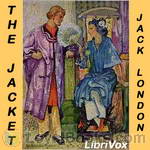 The Jacket (or Star Rover)
The Jacket (or Star Rover)
This book by Jack London was published under the name of "The Jacket" in the UK and "The Star Rover" in the US. A framing story is told in the first person by Darrell Standing, a university professor serving life imprisonment in San Quentin State Prison for murder. Prison officials try to break his spirit by means of a torture device called "the jacket," a canvas jacket which can be tightly laced so as to compress the whole body, inducing angina. Standing discovers how to withstand the torture by entering a kind of trance state, in which he walks among the stars and experiences portions of past lives... | |
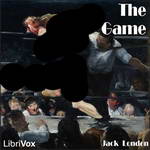 The Game
The Game
Jack London wrote at least four stories about boxing; A Piece of Steak (1909), The Mexican (1911), The Abysmal Brute (1911), and The Game (1905). The Game is told, in part, from the point of view of a woman, the fiancée of one of the competitors. This is to be his last fight and they are to be married on the morrow. Against her better judgment, she agrees to watch the bout. (Introduction by Tom Crawford) | |
 Valley of the Moon
Valley of the Moon
The novel Valley of the Moon is a story of a working-class couple, Billy and Saxon Roberts, struggling laborers in Oakland at the Turn-of-the-Century, who left the city life behind and searched Central and Northern California for a suitable farmland to own. The book is notable for the scenes in which the proletarian hero enjoys fellowship with the artists' colony in Carmel, and he settles in the Valley of the Moon. | |
 Burning Daylight
Burning Daylight
Burning Daylight, Jack London's fictional novel published in 1910, was one of the best selling books of that year and it was his best selling book in his lifetime. The novel takes place in the Yukon Territory in 1893. The main character, nicknamed Burning Daylight was the most successful entrepreneur of the Alaskan Gold Rush. The story of the main character was partially based upon the life of Oakland entrepreneur "Borax" Smith. (Wikipedia) | |
 Before Adam
Before Adam
"Before Adam is a mixture of sound science and sci-fi speculation. It is based around Darwin's theory of evolution and the idea of racial memory. The main character lives in the current world but has dreams and nightmares that he relives the pre-stone age life of one of his proto-human ancestors. Those who are scientifically inclined may enjoy this novel more than fans of "standard" science fiction such as Edgar Rice Burroughs. | |
 When God Laughs, and Other Stories
When God Laughs, and Other Stories
This collection of Jack London's short stories touches on a variety of topics, from his love of boxing, to relationships between criminals, to the trials of life and travel on many frontiers, to an allegory about a king who desired a nose. London is considered a master of the short story, a form much more to his liking and personality than his novels. He was active and quick of mind and the short story suited him well. | |
 Stories of Ships and the Sea
Stories of Ships and the Sea
5 Exciting short stories by one of Americas best story tellers | |
 Tales of the Fish Patrol
Tales of the Fish Patrol
Wildest among the fisher-folk may be accounted the Chinese shrimp-catchers. It is the habit of the shrimp to crawl along the bottom in vast armies till it reaches fresh water, when it turns about and crawls back again to the salt. And where the tide ebbs and flows, the Chinese sink great bag-nets to the bottom, with gaping mouths, into which the shrimp crawls and from which it is transferred to the boiling-pot. This in itself would not be bad, were it not for the small mesh of the nets, so small that the tiniest fishes, little new-hatched things not a quarter of an inch long, cannot pass through... | |
 South Sea Tales
South Sea Tales
The eight short stories that comprise South Sea Tales are powerful tales that vividly evoke the early 1900’s colonial South Pacific islands. Tales of hurricanes, missionaries, brotherhood and seafaring are intertwined with enslavement, savagery, and lawless trading to expose the often-barbarous history of the South Pacific islands. You will also gain unsparing insight into the life, culture and relations between natives and Westerners during this period. If you like nautical and sea adventures, if you are interested in the history of the South Pacific islands, and especially if you want to read gripping tales set in the exotic lands, then this book will be perfect for you... | |
 Abysmal Brute
Abysmal Brute
Young Pat Glendon is twenty-two years old, weighs two-hundred and twenty pounds, has never drunk alcohol nor tasted tobacco and knows little of city life. He’s all muscle, moves with cat-like grace and possesses great stamina and strength acquired from living natural in the wilds of northern California with his father. Young Pat is a natural at prize-fighting. In addition to his brawn he has speed and a natural instinct for the sport. His father, a former heavyweight prize-fighter himself, has trained Young Pat and believes it is time for the boy to take on the heavyweight world... | |
By: Jackson Gregory (1842-1943) | |
|---|---|
 The Bells of San Juan
The Bells of San Juan
Rod Norton is a lawman in a land where bandits and criminals make their own rules. Risking his life for justice and a future with the woman he loves, mortal danger awaits. For Norton and those in peril, the Bells of San Juan will chime. | |
By: Jacob & Wilhelm Grimm (1785-1863; 1786-1859) | |
|---|---|
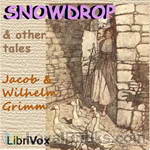 Snowdrop and Other Tales
Snowdrop and Other Tales
Many of these tales were published in English in 1909, the Brothers Grimm tales in this book were published separately in 1920 with illustrations by Arthur Rackham (1867-1939). | |
By: Jacob Abbott | |
|---|---|
 Queen Elizabeth
Queen Elizabeth
The history of a woman who rose above and beyond tragedy, grief and personal loss to become one of the most powerful figures in sixteenth century Europe is wonderfully told in this biography Queen Elizabeth, by Jacob Abbott. Beginning with the tragic circumstances of Elizabeth's mother, the lovely and doomed Anne Boleyn's execution and Henry VIII's dissolution of the English Catholic Church, the story of Elizabeth's rise to power is reflective of the England's domination of world politics as well... | |
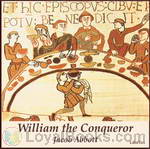 William the Conqueror
William the Conqueror
There are certain names which are familiar, as names, to all mankind; and every person who seeks for any degree of mental cultivation, feels desirous of informing himself of the leading outlines of their history, that he may know, in brief, what it was in their characters or their doings which has given them so widely-extended a fame. Consequently, great historical names alone are selected; and it has been the writer’s aim to present the prominent and leading traits in their characters, and all the important events in their lives, in a bold and free manner, and yet in the plain and simple language which is so obviously required in works which aim at permanent and practical usefulness... | |
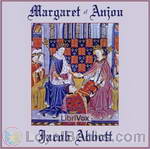 Margaret of Anjou
Margaret of Anjou
Margaret of Anjou, wife of England’s Henry VI, played a key role in launching the storied War of the Roses – the 30-year civil conflict fuelled by the Lancasters and the Yorks, each vying for the British throne in the 15th century. (Summary by Cathy Barratt.) | |
By: Jacob Grimm (1785-1863), Wilhelm Grimm (1786-1859), and Andrew Lang (1844-1912) (1785-1863) | |
|---|---|
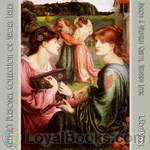 Personal Collection of Short Tales compiled by Carmie
Personal Collection of Short Tales compiled by Carmie
This is a selection of the fairy tales (in English) written by Jacob Ludwig Carl Grimm and Wilhelm Karl Grimm in the early 19th Century. These stories are fantastical and although aimed squarely at the flexible mind of a child which can assimilate much stranger concepts than an adult they are quite dark and occasionally brutal. The stakes can be quite high as in Rumpelstiltskin where a terrible bargain is made without due regard to possible future consequences and Tom Thumb who seems forever about to be imprisoned or sliced in two... | |
By: Jacques Futrelle (1875-1912) | |
|---|---|
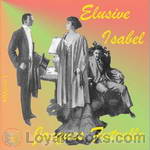 Elusive Isabel
Elusive Isabel
Elusive Isabel is a novel by Jacques Futrelle (April 9, 1875 – April 15, 1912) first published in 1909. Set in Washington, D.C., it is a spy novel about an international conspiracy of the “Latin” countries against the English-speaking world with the aim to take over world control. | |
By: Jacques-Henri Bernardin de Saint-Pierre | |
|---|---|
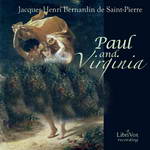 Paul and Virginia
Paul and Virginia
Paul and Virginia was first published in 1787. The novel's title characters are very good friends since birth who fall in love, but sadly die when the ship Le Saint-Geran is wrecked. The story is set in the island of Mauritius under French rule, then named Île de France, which the author had visited. Written on the eve of the French Revolution, the novel is hailed as Bernardin's finest work. It records the fate of a child of nature corrupted by the false, artificial sentimentality that prevailed at the time among the upper classes of France. | |
By: James Allen (1864-1912) | |
|---|---|
 As a Man Thinketh
As a Man Thinketh
“A man is literally what he thinks, his character being the complete sum of all his thoughts,” is one of the quotes from James Allen's classic self help books, As a Man Thinketh. Published in 1902, it provides many more such insightful concepts on the power of thought and its effect on a human being's personality and behavior. This volume is more of a literary essay than a complete book and its title is based on a Biblical proverb, “As a man thinketh in his heart, so is he.” Taking this piece of ancient wisdom further, James Allen explores the far-reaching effects of the inner workings of a person's mind and motivation... | |
By: James B. Hendryx (1880-1963) | |
|---|---|
 Snowdrift
Snowdrift
The story revolves around Carter Brent, an alcoholic and gambler who had struck gold many times in the Yukon, but gambled and drank it away in Dawson; and Snowdrift, the half-breed who had spent her life with a wandering band of Indians in the frozen north country. Snowdrift had been raised by Wananebish, yet never knew who her father was, and yet Wananebish had somehow been able to send her to be schooled at a nearby mission.The paths of this unlikely pair would cross in the barren lands of the Yukon where Brent had hopes of finding more gold, but it was well known that there was no gold in the region between Dawson and the MacKenzie... | |
By: James Baikie | |
|---|---|
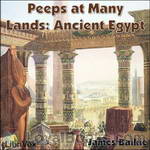 Peeps at Many Lands: Ancient Egypt
Peeps at Many Lands: Ancient Egypt
Written primarily for children, James Baikie’s ‘peep’ at ancient Egypt is a really well done, historical account of the ways of that fascinating land so many years ago. It has stood well the test of time, being both well researched and well written. It’s a fun book for everyone, and families especially will enjoy listening together. | |
By: James Baldwin (1841-1925) | |
|---|---|
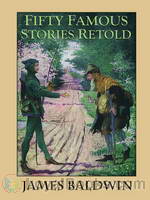 Fifty Famous Stories Retold
Fifty Famous Stories Retold
King Alfred and the Cakes. Damon and Pythias. The Sword of Damocles. Bruce and the Spider. These are stories that many people who grew up in the last century would be familiar with. They were included in our text books or to be found in anthologies in our school libraries. However, for a new generation growing up, some of these may be new and unknown. Hence, Fifty Famous Stories Retold by James Baldwin would indeed be a great addition to your children's bookshelf. James Baldwin, who shares his name with another famous American author was an editor, author and gifted teacher... | |
 Old Greek Stories
Old Greek Stories
A retelling of old Greek stories involving mythological heroes and their adventures. Tales include those of Prometheus, Io, Perseus and Theseus. (Introduction by Iris McLeod) | |
By: James Blish (1921-1975) | |
|---|---|
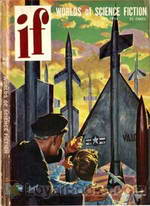 The Thing in the Attic
The Thing in the Attic
Honath the Pursemaker is a heretic. He doesn’t believe the stories in the Book of Laws which claims giants created his tree-dwelling race. He makes his opinion known and is banished with his infidel friends to the floor of the jungle where dangers abound. Perhaps he’ll find some truth down there. – The Thing in the Attic is one of Blish’s Pantropy tales and was first published in the July, 1954 edition of If, Worlds of Science Fiction magazine. | |
By: James Brendan Connolly (1868-1957) | |
|---|---|
 The Trawler
The Trawler
The Trawler is a short story revolving around the trying life of a group of bank fishermen based in Gloucester. Skipper Hugh Glynn worked his men hard; some said too hard, and Arthur Snow was one who had paid the ultimate price.Arthur's close friend Simon Kippen decided he'd ask to take the place of his fallen friend aboard Hugh Glynn's vessel as a dory mate, and from there we have a tale of the open seas between Gloucester and Newfoundland where perhaps only the names and locations have changed from the countless stories of similar nature; the key being that this one, however, is first hand. | |
By: James De Mille (1833-1880) | |
|---|---|
 A Strange Manuscript Found in a Copper Cylinder
A Strange Manuscript Found in a Copper Cylinder
A Strange Manuscript Found in a Copper Cylinder is the most popular of James De Mille’s works. It was serialized posthumously in Harper’s Weekly, and published in book form by Harper and Brothers of New York City in 1888. This satirical romance is the story of Adam More, a British sailor. Shipwrecked in Antarctica, he stumbles upon a tropical lost world of prehistoric animals, plants, and a cult of death-worshipping primitives. He also finds a highly developed human society which has reversed the values of Victorian society... | |